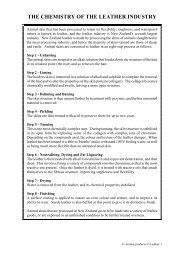Pigment Dispersion perparation
You also want an ePaper? Increase the reach of your titles
YUMPU automatically turns print PDFs into web optimized ePapers that Google loves.
12/1/2016 Steric stabilization<br />
<strong>Pigment</strong>s are usually incorporated in the coating in the form of dry pigment powders. The pigments are not primary<br />
particles, they are agglomerates. Agglomerates represent pigment “groupings” in which the spaces between the<br />
individual pigment particles contain air and moisture. These individual pigment particles are in contact with one<br />
another only along their edges and corners. Interactive forces between the particles are relatively small so that such<br />
forces can be overcome by traditional dispersing units. In the case of pigment dispersion, the pigment agglomerates<br />
are broken up by impact and shearing forces, which ideally lead to primary particles.<br />
During this process, energy is supplied to the coating system and therefore smaller particles are formed, with a larger<br />
interface to the resin solution. The system then endeavors to escape this energy-rich state in order to revert to its<br />
previous low-energy state: the finely distributed pigments come back together to form larger structures which are then<br />
known as flocculates. This is expressed, for example, by the reduced color strength, decreased gloss, and altered<br />
rheology. In terms of structure, the flocculates are very similar to the agglomerates; nevertheless, the interstitial<br />
spaces between the pigments are now filled with a binder solution rather than air.<br />
<strong>Pigment</strong> dispersion and flocculation<br />
0:16 / 0:16<br />
http://ebooks.byk.com/en/wettinganddispersing/stericstabilization/ 4/20


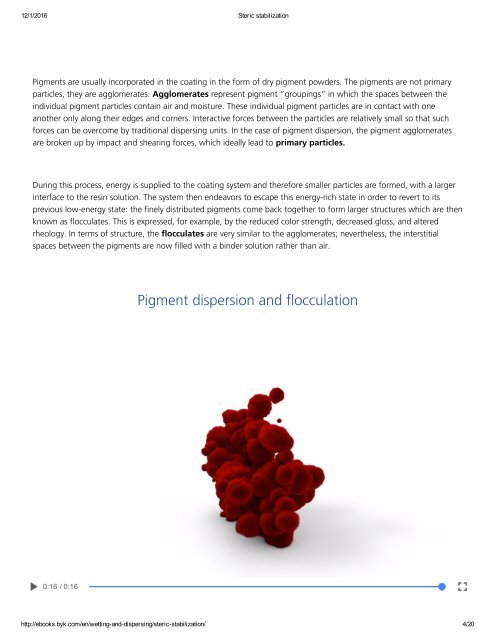

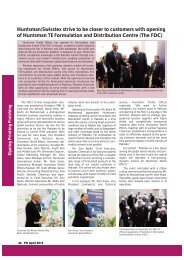

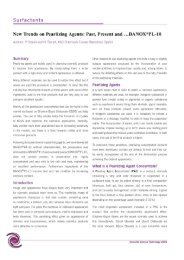

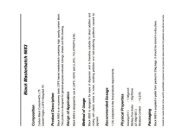

![[Ulwick_A.W.]_Business_Strategy_Formulation_Theor(BookZZ.org)](https://img.yumpu.com/56355932/1/190x240/ulwick-aw-business-strategy-formulation-theorbookzzorg.jpg?quality=85)

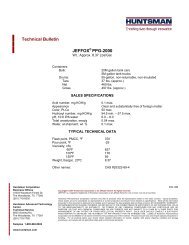

![Desmond Morris - 2002 - Peoplewatching - The Desmond Morris Guide to Body Language (poor quality-double page)(290p) [Inua]](https://img.yumpu.com/54998318/1/189x260/desmond-morris-2002-peoplewatching-the-desmond-morris-guide-to-body-language-poor-quality-double-page290p-inua.jpg?quality=85)
